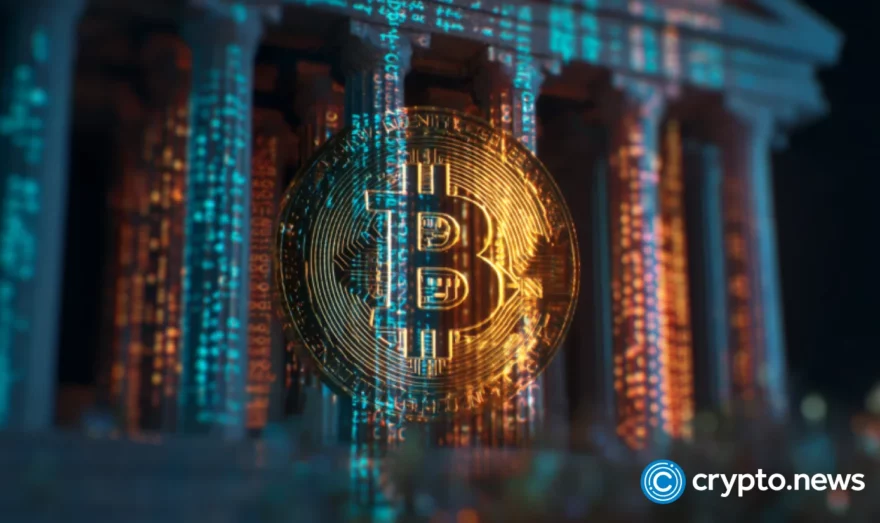Stablecoin risks and how to overcome them | Opinion

Disclosure: The views and opinions expressed here belong solely to the author and do not represent the views and opinions of crypto.news’ editorial.
Given the rise in interest towards central bank digital currencies, their usage will continue to increase. This is despite the recent turmoil about the recent depegging of USDC or, much worse, the collapse of the TerraUSD (UST) stablecoin and its sister cryptocurrency LUNA.
But with all this attention, it becomes increasingly important to understand what kind of risks you might face using CBDCs.
Stablecoins are digital currencies designed to maintain a stable value relative to a traditional currency, commodity, or other asset. It is their stability that makes them attractive for a number of use cases in the likes of facilitating cross-border transactions, serving as a store of value, and even enabling decentralized finance (DeFi) applications.
Overall, stablecoins were created with one big goal in mind – to address the high price fluctuations of native cryptocurrencies such as bitcoin (BTC) and ethereum (ETH). And while bitcoin’s volatility is great for traders who can use the cryptocurrency as an investment, it makes it much harder to use it as a payment method, thus also further slowing the wider adoption of blockchain technology.
This is where stablecoins come into play, as their close links to fiat currency help them maintain a more stable value, allowing them to act as a means of payment. In addition, stablecoins can be sent and received much quicker and are inexpensive, regardless of borders and jurisdiction, and without the need for intermediaries like banks.
Furthermore, the development of stablecoins has increased significantly in recent years, with major players such as tether (USDT), the USD coin, and dai becoming increasingly prominent in the cryptocurrency market. The total market capitalization of stablecoins has grown rapidly over the past few years, reaching over $130 billion as of the time of writing. Moreover, with the Federal Reserve still mulling over the creation of a central bank digital currency (CBDC), stablecoins are only growing in popularity.
Overall, there are three types of stablecoins which are based on the mechanics used to stabilize their value. The first two are fiat and crypto-collateralized stablecoins which are backed by either fiat or other cryptocurrencies. Most fiat-backed stablecoins are directly linked to the US dollar. In addition, it is important to note that crypto-collateralized stablecoins add volatility and all technical liability of one blockchain or token to another, thus adding an additional layer of risk to the asset.
The third type of stablecoins is algorithmic stablecoins, whose reserves are controlled by a specifically designed algorithm.
This can only mean one thing – stablecoin buyers should be aware of the risks attached to holding them.
One of the key risks associated with holding stablecoins is counterparty risk. Stablecoins are usually issued by centralized entities that are responsible for maintaining their reserve, which means that if the issuer faces financial difficulties or goes bankrupt, the value of the stablecoin may be impacted, leading to a loss of funds for the holders.
It is, therefore, vital to understand what happens in a liquidation process, under which jurisdiction such a process shall take place, and how long it typically goes. Creditors of the bankrupt Mt.Gox crypto exchange have been waiting for any sort of decision or ruling for over nine years. It is very likely that in such a liquidation process, token holders will not get the underlying USD value of their token as they were initially promised.
Given the fact that the stablecoin issuer can fail to meet their obligation, stablecoin buyers should not just be aware of this risk but also actively push for stablecoins that come with a value protection guarantee.
This value protection guarantee will only become important if the stablecoin issuer defaults. In this case, the token holder will not become part of the liquidation proceedings but can go directly to the institution that provided the value protection guarantee and redeem their tokens against fiat on the promised 1:1 ratio. The only counterparty risk that the stablecoin buyer has will be if the stablecoin issuer defaults at the same time the issuer of the value protection guarantee does. Although this is not completely impossible, it can be considered very unlikely.
Additionally, stablecoins are not immune to market risk, and their value could be impacted by various market events, such as sharp price changes in the underlying asset they are pegged to or disruptions in the cryptocurrency market.
This is why buyers must conduct due diligence and thorough research prior to putting any money into stablecoins. Understanding the backing of the stablecoin they are interested in purchasing, looking into the regulatory status of the issuer, and researching where the funds are held are only the first steps one must take before buying into a stablecoin.
Knowing about the liquidation process in case the issuer of the stablecoin fails to meet their obligations is another important way in which people can protect themselves when purchasing a new stablecoin. As outlined above, the safe bet here is to buy a stablecoin that comes with value protection like a bank guarantee, which provides the buyer with a risk shield against the default of the stablecoin issuer.
Overall, one must conduct thorough research and due diligence before buying stablecoins to understand their risks and potential benefits. Potential buyers should consider the specific type of stablecoin, its underlying asset, and the issuer’s credibility, regulatory setup, and value protection offering in case of liquidation. By understanding the potential risks and taking the necessary precautions, buyers can make informed decisions about whether holding stablecoins is suitable for them.














